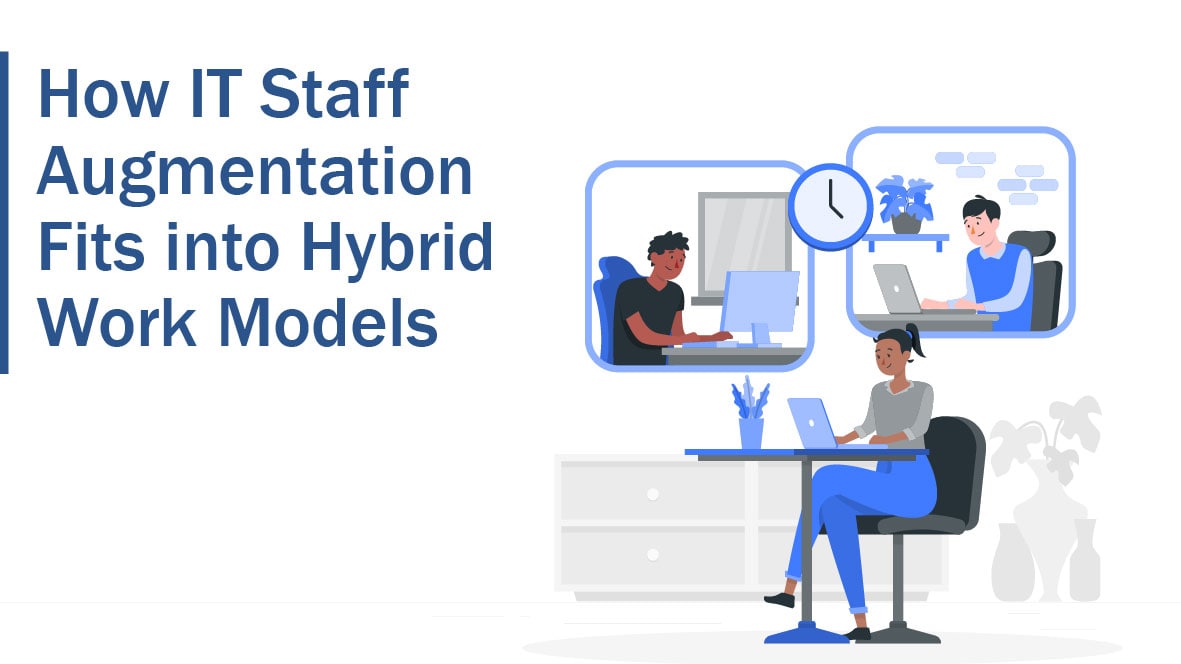The Future of Work: How IT Staff Augmentation Fits into Hybrid Work Models

The landscape of work has undergone profound changes in recent years, with hybrid work models emerging as a dominant trend. This evolution has necessitated a rethinking of traditional workforce management strategies, particularly in the IT sector. IT staff augmentation has become an increasingly vital tool in this new era, offering the flexibility and expertise required to navigate the complexities of hybrid work environments. This blog explores how IT staff augmentation fits into hybrid work models, highlighting how companies can blend in-house and augmented teams to achieve optimal flexibility and efficiency.
Understanding IT Staff Augmentation
IT staff augmentation is a flexible outsourcing strategy that allows companies to hire tech talent globally and manage augmented teams directly. Unlike traditional outsourcing, staff augmentation supplements the company’s existing workforce on an as-needed basis, providing specialized skills to support projects or fill gaps without the long-term commitments of hiring full-time employees.
The Rise of Hybrid Work Models
Hybrid work models, which combine remote and in-office work, have become increasingly popular for their ability to offer employees flexibility and improve work-life balance. For companies, hybrid models can lead to increased productivity, lower office costs, and access to a broader talent pool. However, managing a hybrid workforce presents unique challenges, including ensuring collaboration and maintaining productivity across dispersed teams.
The Role of IT Staff Augmentation in Hybrid Work
1. Addressing Skill Gaps: Hybrid models often require a rapid adaptation to new technologies and processes. IT staff augmentation allows companies to quickly bring in experts with the necessary skills to drive digital transformation efforts, whether it’s cloud computing, cybersecurity, or software development.
2. Enhancing Flexibility: The fluid nature of hybrid work models demands a workforce that can rapidly scale up or down based on project needs. Augmented staff can be brought in to handle project surges or provide specialized skills without the overhead associated with permanent hires.
3. Fostering Collaboration: One of the challenges of hybrid work is ensuring seamless collaboration between remote and in-office teams. Augmented IT staff, experienced in remote collaboration tools and methodologies, can help bridge these gaps. They can introduce best practices and technologies that enhance communication and project management across all work environments.
4. Cost Efficiency: IT staff augmentation allows companies to optimize their labor costs by hiring talent from regions with lower labor costs, all while maintaining high standards of quality and productivity. This can be particularly advantageous for startups and small to medium-sized enterprises (SMEs) that may not have the resources to compete for top talent in more expensive labor markets
Implementing a Blended Workforce Model
To effectively blend in-house and augmented teams, companies should consider the following strategies:
1. Clear Communication: Establish clear channels and protocols for communication to ensure that all team members, regardless of location, are aligned on projects and goals.
2. Cultural Integration: Foster a cohesive team culture that includes augmented staff, promoting a sense of belonging and collaboration.
3. Technology Infrastructure: Invest in the necessary tools and platforms to support remote work, including project management software, collaboration tools, and secure access to company networks.
4. Continuous Learning: Encourage knowledge sharing and continuous learning among in-house and augmented teams to leverage diverse skills and insights.
Conclusion
As hybrid work models continue to evolve, IT staff augmentation offers companies the flexibility and expertise required to navigate this new landscape effectively. By strategically blending in-house and augmented teams, organizations can enhance their agility, access specialized skills, and maintain a competitive edge in the rapidly changing world of work. The future of work demands a dynamic approach to workforce management, and IT staff augmentation is poised to play a crucial role in shaping that future.







